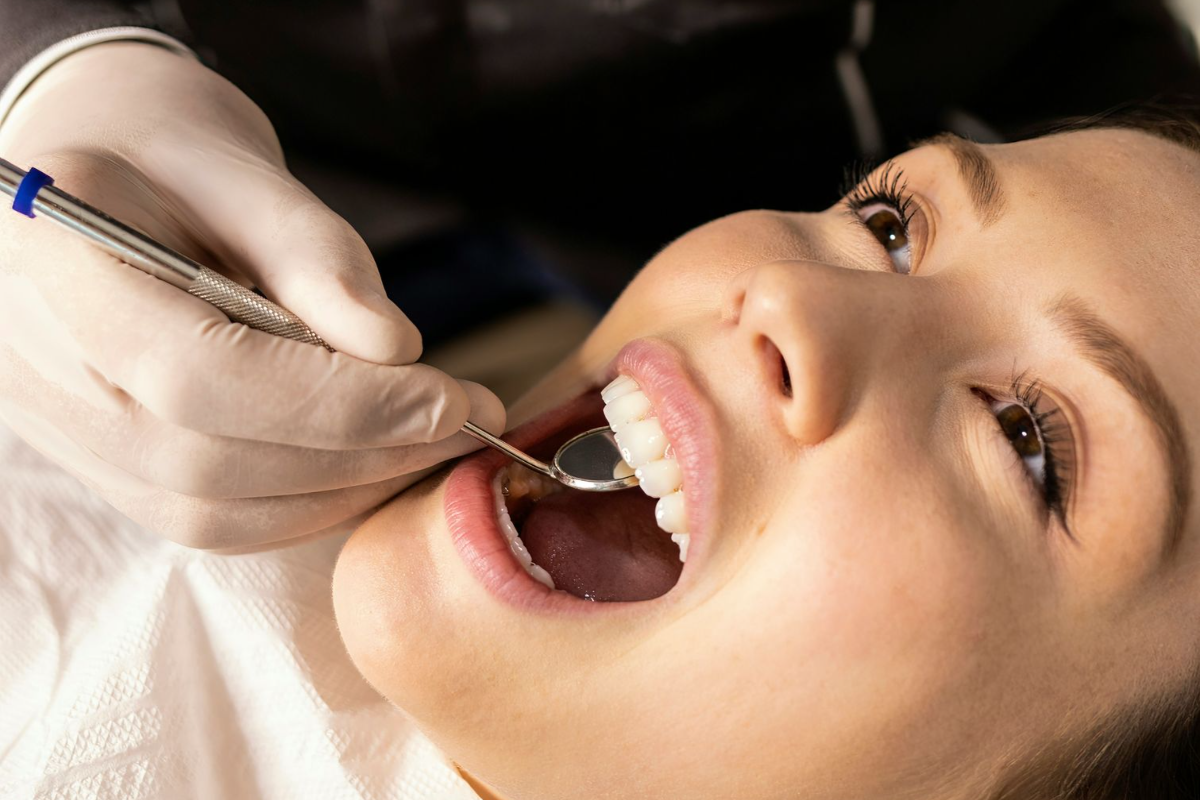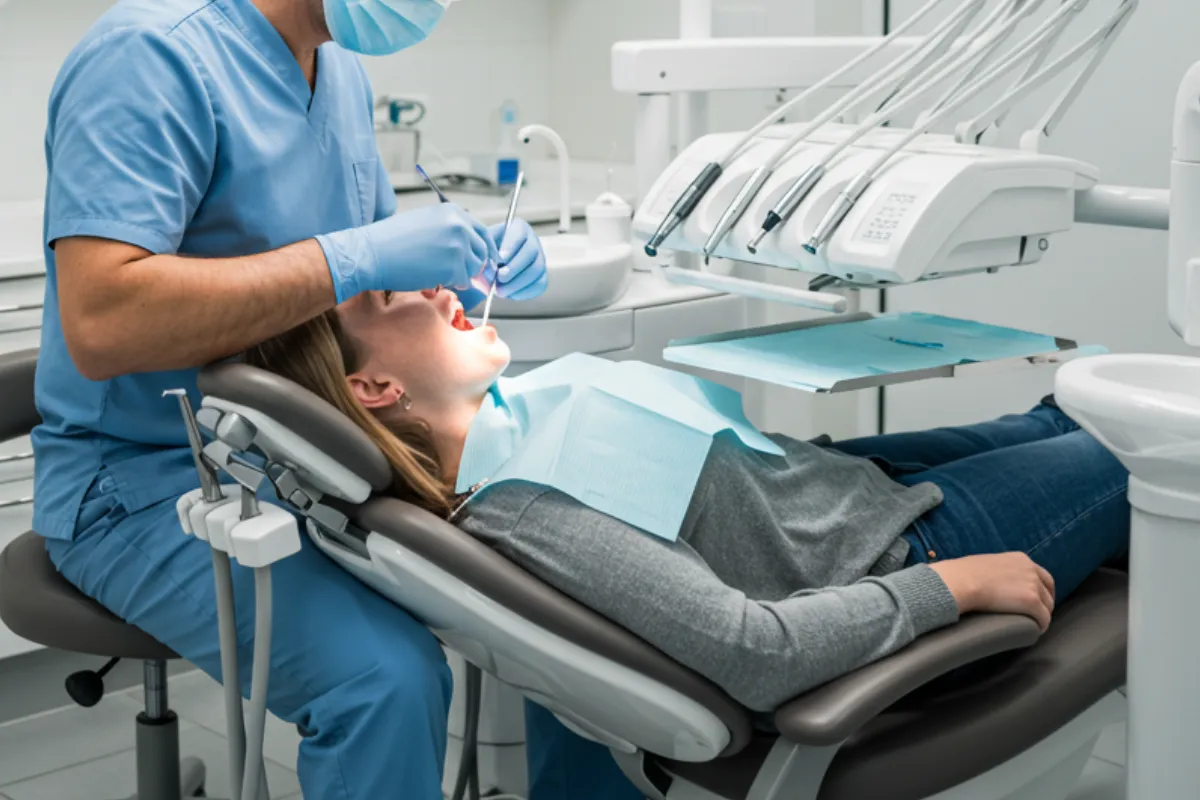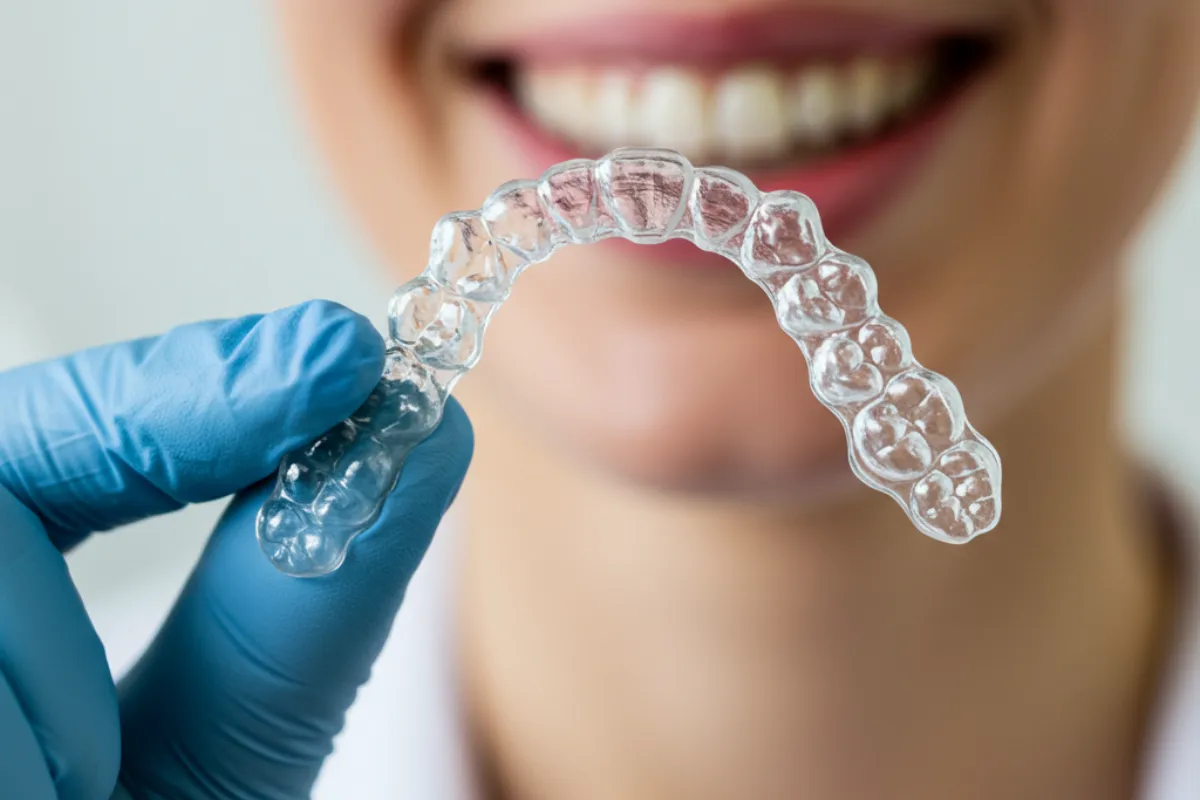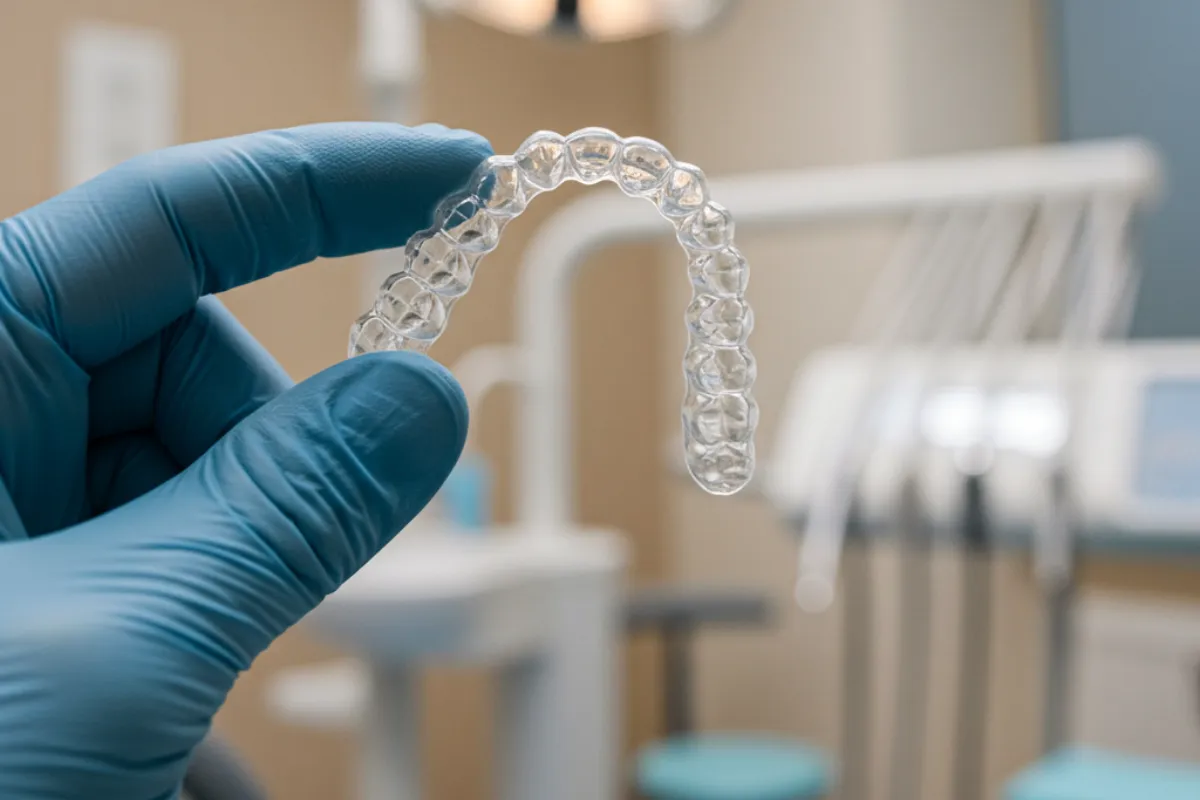Brighter Smiles: Cosmetic Dentistry Solutions in North Vancouver

Rediscovering Confidence Through a Healthier, Brighter Smile
A smile is often considered one of our most powerful assets. It can break the ice, make lasting impressions, and even influence how we feel about ourselves. Unfortunately, dental imperfections—whether minor or more significant—can make people feel self-conscious, causing them to hide their smiles or avoid social situations altogether. Cosmetic dentistry is designed to address these concerns, offering transformative solutions that not only enhance appearance but also foster greater self-esteem.
Modern cosmetic dentistry recognizes that dental care isn't just about function or health; it's deeply tied to the way we present ourselves and interact with others. When individuals invest in their smiles, they're often investing in their confidence and well-being as well. Whether it’s a teenager feeling shy about misaligned teeth or an adult wishing to erase years of coffee stains, cosmetic dental treatments are inclusive, catering to people of all ages and backgrounds.
Personalization is key in cosmetic dentistry. Dentists now create individualized treatment plans that consider each patient’s unique needs, dental history, and aesthetic goals. By tailoring procedures—ranging from teeth whitening to dental implants—patients receive care that not only transforms their smiles but also supports their broader oral health. Ultimately, cosmetic dentistry is about rediscovering the joy of smiling openly and embracing life with renewed confidence.
From Stains to Gaps: Common Dental Issues and Their Impact
Dental imperfections can arise from various sources, including daily habits, genetics, injuries, or even the natural aging process. Common issues like tooth discoloration, chips, cracks, gaps, misaligned teeth, and gum irregularities are more than just aesthetic concerns—they can also affect how your mouth functions and how you feel about yourself.
For example, stains and discoloration can be caused by coffee, tea, tobacco, or simply getting older. Chips and cracks may result from accidents, teeth grinding, or biting into hard foods. Gaps and misaligned teeth could be hereditary or develop as children grow. Missing teeth are sometimes the result of trauma, decay, or gum disease. Even an uneven gum line can make an otherwise healthy smile appear less harmonious.
These concerns often extend beyond appearance. Discolored or damaged teeth might make people hesitant to speak, laugh, or eat in public. Gaps and misaligned teeth can affect speech, chewing, and even lead to further dental complications. Missing teeth can cause shifting of remaining teeth and bone loss over time. Addressing these issues promptly isn’t just about looking better—it’s about maintaining oral health and boosting confidence. Fortunately, advancements in cosmetic dentistry have made solutions more accessible and effective, enabling individuals to regain both function and self-assurance.
Brightening Discolored Teeth: Whitening, Crowns, and Bonding Options
Tooth discoloration is one of the most common reasons people seek cosmetic dental care. Stains can develop from regular consumption of coffee, tea, red wine, and certain foods, as well as from smoking or using tobacco products. Age and specific medications can also contribute to a dull or yellowed appearance.
Professional teeth whitening is often the preferred solution for extrinsic (surface) stains. Dentists use safe, highly effective whitening agents that can brighten teeth several shades in a single visit. This process is far more reliable and longer-lasting than over-the-counter products, and it’s supervised to minimize the risk of sensitivity or uneven results.
For intrinsic stains—those that originate inside the tooth—or when whitening isn’t effective due to severe discoloration or existing dental restorations, alternatives like dental crowns or bonding may be recommended. Dental crowns cover the entire tooth, masking imperfections and strengthening weakened enamel. Bonding involves applying a tooth-colored composite resin to the tooth, which can conceal stains and restore a natural look.
Regardless of the chosen method, maintaining your results involves good oral hygiene, regular dental check-ups, and limiting stain-causing foods and drinks. By working closely with a dental professional, you can achieve and preserve a luminous, confident smile.
Repairing Chips, Cracks, and Worn Teeth: Veneers, Crowns, and More
Life’s little mishaps—from biting hard foods to unexpected accidents—can result in chipped, cracked, or worn-down teeth. Over time, habits like teeth grinding (bruxism) or using teeth as tools can also contribute to enamel wear. These imperfections not only affect appearance but can also lead to sensitivity, difficulty chewing, and further damage if left untreated.
Dental veneers offer an elegant solution for minor to moderate chips and cracks. Thin shells of porcelain or composite resin are custom-made to fit over the front of the affected teeth, restoring their shape, color, and strength. Veneers are highly durable and provide a natural-looking finish.
For teeth that are more significantly damaged or weakened, dental crowns might be necessary. A crown covers the entire tooth, offering protection and improving both aesthetics and function. Crowns are especially beneficial when a tooth has lost much of its original structure.
Dental bonding is another versatile option, especially for small chips or cracks. The dentist applies a tooth-colored resin directly to the tooth, sculpting and polishing it for a seamless repair—often completed in a single visit.
In cases where the damage is too severe for these methods, dental implants may be considered. Implants replace the entire tooth, including the root, ensuring long-term stability and function. Regardless of the treatment chosen, timely intervention is key to preventing further complications and preserving your smile’s integrity.
Closing Gaps and Straightening Smiles: Invisalign, Braces, and Veneers
Gaps between teeth and misalignment are common dental concerns, often stemming from genetics, childhood habits, or the shifting of teeth due to loss of neighboring teeth. While these issues are sometimes viewed as cosmetic, they can also impact oral health by making teeth harder to clean and increasing the risk of decay and gum disease.
Invisalign has become a popular option for those seeking a discreet, comfortable way to straighten mildly to moderately misaligned teeth or close gaps. Using a series of clear, removable aligners, Invisalign gradually shifts teeth into their ideal positions—without the need for metal brackets or wires. This makes it a favorite among teens and adults alike.
For more complex alignment challenges, traditional metal braces remain a reliable solution. They offer precise control over tooth movement and can correct severe crowding, spacing, and bite issues.
Veneers provide an alternative for those with small gaps or minor misalignments who prefer a faster, less invasive approach. By placing veneers over the front of the teeth, dentists can create the appearance of a perfectly aligned, gap-free smile.
Correcting gaps and misalignment isn’t just about appearance; it can improve bite function, speech, and long-term oral health, making these treatments a worthwhile investment for both form and function.
Restoring Missing and Misshapen Teeth: Dental Implants, Bridges, and Bonding
Missing or misshapen teeth can have significant consequences, not only for your smile’s appearance but also for your overall oral health. Gaps left by missing teeth can cause neighboring teeth to shift, alter your bite, and even lead to bone loss in the jaw over time. Misshapen teeth, meanwhile, can affect chewing and speech and may diminish confidence.
Dental implants are widely regarded as the most effective solution for replacing one or more missing teeth. Consisting of a titanium post that fuses with the jawbone and a custom-made crown, implants mimic the look, feel, and function of natural teeth. They are durable, stable, and help maintain jawbone health.
Dental bridges offer another reliable option for filling gaps, especially when implants aren’t suitable. A bridge consists of an artificial tooth anchored to adjacent natural teeth or crowns, restoring both appearance and function.
For misshapen teeth, dental bonding and crowns are popular choices. Bonding involves sculpting composite resin directly onto the tooth to correct shape and size, while crowns encase the entire tooth, providing a more dramatic transformation when needed.
Restoring missing and misshapen teeth not only rejuvenates your smile but also supports healthy chewing, clear speech, and the long-term stability of your dental structure.
Addressing Gummy Smiles and Uneven Gum Lines: Gum Contouring and Crown Lengthening
A “gummy smile,” where excessive gum tissue covers the teeth, or an uneven gum line, can make teeth appear shorter or asymmetrical. These concerns may be caused by genetics, certain medications, or irregular tooth eruption. While such issues are typically harmless from a health perspective, they can significantly affect the overall harmony of your smile.
Gum contouring is a minimally invasive procedure that gently reshapes the gum line to create a more balanced, aesthetically pleasing look. Using advanced technology, dentists can precisely remove excess gum tissue, revealing more of the natural tooth and enhancing the proportions of your smile.
Crown lengthening is another technique used when more extensive tooth exposure is needed, such as for teeth that are partially covered by gum or when preparing for a dental restoration. This procedure involves removing both gum tissue and, occasionally, a small amount of bone to achieve the desired result.
Both gum contouring and crown lengthening are typically performed with local anesthesia and involve minimal discomfort. Recovery is generally quick, and the benefits extend beyond aesthetics—reshaping the gum line can also make it easier to maintain good oral hygiene and reduce the risk of gum disease.
Choosing the Right Cosmetic Dental Treatment for Your Needs
Choosing the ideal cosmetic dental treatment begins with a thorough understanding of your unique dental needs and aspirations. A comprehensive assessment by a dental professional is essential—they’ll examine not just the aesthetics but also the health and function of your teeth and gums. This holistic approach ensures that any cosmetic enhancement is safe, sustainable, and tailored to your individual situation.
Your dental history, lifestyle, and personal goals play a crucial role in determining the most appropriate treatment. For example, someone with mild staining might opt for whitening, while a person experiencing significant wear or structural issues may require crowns or implants. Comparing the benefits and limitations of each option—such as durability, invasiveness, cost, and expected outcomes—can help you make an informed choice.
Patient education is a fundamental part of the process. Understanding the available treatments, what they involve, and what results to expect empowers you to participate actively in your care. Open communication with your dentist allows you to express concerns, ask questions, and develop a treatment plan that aligns with your vision for your smile.
Ultimately, consulting with a trusted dental professional is the best way to ensure you receive care that not only meets your expectations but also supports long-term oral health and confidence.






